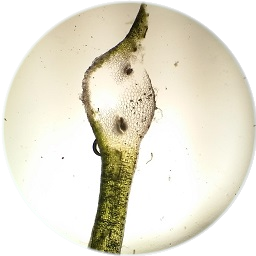
Jeango 2/2/2021, 7:01:07 PM
👉 Assets & Metadata & CSS
- https://nextjs.org/docs/basic-features/built-in-css-support
- https://nextjs.org/learn/basics/assets-metadata-css
- https://nextjs.org/docs/basic-features/static-file-serving
- https://nextjs.org/docs/api-reference/next/head
- https://github.com/vercel/next.js/tree/canary/examples/with-styled-components
- https://github.com/vercel/next.js/tree/canary/examples/with-tailwindcss
- https://github.com/vercel/next.js/tree/canary/examples/with-emotion
这节学习如何管理静态资源:
- How to add static files (images, etc) to Next.js.
- How to customize what goes inside the for each page.
- How to create a reusable React component which is styled using CSS Modules.
- How to add global CSS in pages/_app.js.
- Some useful tips for styling in Next.js.
如果,没有完成前面的工作,可以直接复制现有的示范工程继续。
npx create-next-app nextjs-blog --use-npm --example "https://github.com/vercel/next-learn-starter/tree/master/assets-metadata-css-starter"
Next.js 提供静态文件服务,如图像文件等,存放于根目录下的 public 顶级目录中,这里的文件可以像 pages 目录中的文件一样使用应用的 root 来引用。
比如 pages/index.js 页面的 footer 需要使用一张静态图片就可以这样引用:
<img src="/vercel.svg" alt="Vercel Logo" className="logo" />
这个 logo 图像在 public 目录中,通过 root 根目录引用它。
同时 public 目录也可以用来存放用于搜索引擎的指引文件 robots.txt,或 Google Site Verification,或者任意的静态资源。
Metadata 就是在 HTML 页面 head 区域的内容,如页面标题 title 等,可以使用 Head 组件渲染。
```jsx
import Head from 'next/head'
/*...*/
<>
<Head>
<title>First Post</title>
<link rel="icon" href="/favicon.ico" />
<meta name="viewport" content="initial-scale=1.0, width=device-width" />
</Head>
<h1>First Post</h1>
</>
```
注意前面的示范代码中,已经在 DOM 嵌入了样式,使用 styled-jsx 模块提供的写法:
<style scoped>{` styles... `}</style>
<style scoped global>{` styles... `}</style>
添加作用域 scroped 后,当前模块中的元素应用样式时会添加后续来避免全局污染,使用 global 和不使用作用域同样效果。
Next.js 内建了 CSS 和 Sass 支持,可以导入 .css 和 .scss 样式文件,还有 styled-jsx 用来编写 CSS-in-JS 样式脚本,当然可以使用其它的样式模块,如 styled-components 或 emotion 这些库,还可以使用像 Tailwind CSS 这样一些流行的样式库。
```ts
import styled from 'styled-components'
const Title = styled.h1`
font-size: 50px;
color: ${({ theme }) => theme.colors.primary};
`
export default function Home() {
return <Title>My page</Title>
}
```
样式处理的主要工作之一就是页面布局处理,可以缩写一些专用于此目的的组件 Layout Component,并存放于顶层的 components 目录下。
然后在页面脚本模块中引入使用:
```ts
import Head from 'next/head'
import Link from 'next/link'
import Layout from '../../components/layout'
export default function FirstPost() {
return (
<Layout>
<Head>
<title>First Post</title>
</Head>
<h1>First Post</h1>
<h2>
<Link href="/">
<a>Back to home</a>
</Link>
</h2>
</Layout>
)
}
```
通过 CSS Modules 可以将样式仅用于当前组件,而不会污染其它不相关的组件结构。
创建一个样式模块文件 components/layout.module.css,注意这种固定格式的后缀名是样式模块的规则要求:
```css
.container {
max-width: 36rem;
padding: 0 1rem;
margin: 3rem auto 6rem;
}
```
将样式应用于组件 components/layout.js,直接将样式对象导出的类名赋给组件的 className 属性即可:
```ts
import styles from './layout.module.css'
export default function Layout({ children }) {
return <div className={styles.container}>{children}</div>
}
```
样式模块 CSS Modules 所做的事件就是自动生成唯一的样式选择器,以避免与其它模块的样式有冲突。并且,Next.js 提供的代码分割功能也一样工作于 CSS Modules。这保证了页面总是持有最少的样式,页面模块的打包也更小。CSS Modules 从 JavaScript 代码打包过程中提取出样式定义,并在构造过程中生成 .css 文件以供 Next.js 动态加载。
前面已经提到过 global 用于定义样式,但是它也仅在组件加载时生效,要定义全站通用的样式,就需要对总入口组件,即 pages/_app.js 进行修改。
可以选择将全局样式表存放于任意目录,但是在顶层 styles 目录是个不错的主意,编写 styles/global.css:
```css
html,
body {
padding: 0;
margin: 0;
font-family: -apple-system, BlinkMacSystemFont, Segoe UI, Roboto, Oxygen, Ubuntu,
Cantarell, Fira Sans, Droid Sans, Helvetica Neue, sans-serif;
line-height: 1.6;
font-size: 18px;
}
* {
box-sizing: border-box;
}
a {
color: #0070f3;
text-decoration: none;
}
a:hover {
text-decoration: underline;
}
img {
max-width: 100%;
display: block;
}
```
然后将其导入 pages/_app.js 即可,如果是首次添加这个文件,请重启开发服务器以生效:
```ts
import '../styles/global.css'
export default function App({ Component, pageProps }) {
return <Component {...pageProps} />
}
```
